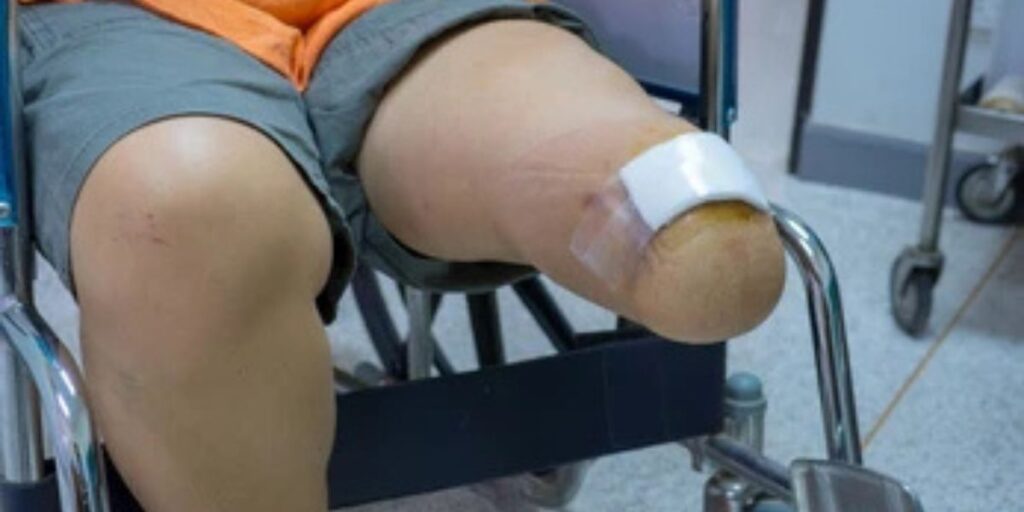Living with diabetes and amputation risk can be overwhelming, but knowledge is your best defense. In the United States, thousands of people lose a limb each year due to preventable complications linked to Diabetes mellitus. Poor blood glucose monitoring, nerve damage, and foot infection treatment challenges often combine to create a dangerous situation. Without proper diabetic foot care, a small sore can evolve into a chronic foot ulcer, leading to serious outcomes. But here’s the good news—most cases are avoidable. With early detection, consistent blood sugar control, and daily attention to your feet, you can take strong steps to avoid this life-altering complication. Prevention really does start from the ground up.
Understanding the Link Between Diabetes and Amputation
Every year, thousands face lower limb amputation because of diabetes-related issues. One major problem is peripheral artery disease (PAD), which limits blood flow. When circulation slows, wounds struggle with wound healing and can worsen into diabetic foot ulcers.
At the same time, nerve damage or diabetic neuropathy treatment issues hide injuries. If you can’t feel a sore, it can grow into a chronic foot ulcer or even gangrene in diabetes, forcing amputation.
Why Diabetes Can Harm Your Feet and Legs
Poor blood flow from vascular disease and diabetes makes it harder for the body to deliver oxygen and nutrients. This leads to foot infection treatment challenges. Any minor scratch can turn severe.
At the same time, peripheral neuropathy means you may not feel pain or temperature. That hidden damage can let a wound worsen. Over time, infections can spread and necessitate amputation and diabetes care.
Early Warning Signs to Watch Out For
Watch for signs like redness, swelling, or warmth in your feet. These are signs of infection and require daily foot check routines. Even a small sore can become serious quickly.
Numbness, tingling, or burning are early nerve damage signs. If you spot any, see a podiatrist for diabetes right away. Proper diabetic foot screening helps catch issues before they escalate.
How Common Is Amputation in Diabetics?
In the U.S., over 100,000 people face diabetic limb loss every year. Most are due to diabetes-related complications like infection, ulcer, or poor circulation. Roughly 60% start with chronic foot ulcer.
This makes prevention vital. Studies from the Centers for Disease Control and Prevention (CDC) show that timely care cuts amputation risk by up to 85%. Early detection can be lifesaving.
Top Risk Factors for Amputation in Diabetics
Uncontrolled blood sugar control and smoking dramatically raise amputation risk. Smoking worsens smoking and diabetes risk by narrowing blood vessels. This reduces circulation even more.
Infections are another major factor. If not treated, they can spread into deep tissue or bone. A delayed debridement procedure can lead to limb loss. Regular attention to foot health is critical.

How to Avoid Amputation: Prevention Tips
Start each day with a foot care routine for diabetics. Examine between toes and beneath soles. Seek help if you find any calluses, cracks, or pus.
Control your blood sugar through Blood glucose monitoring and healthy meals. This reduces Diabetes-related complications and aids wound healing. Keep moving—exercise helps high blood sugar and circulation.
When Amputation Becomes Necessary
There are times when a limb must be removed. If infection spreads or gangrene in diabetes sets in, doctors may recommend removal. It’s a tough choice, but often needed to save your life.
This is not a failure. It’s a step to better health. Once the infected area is removed, you may still be able to walk with doors open for healing and post-amputation rehabilitation.
What Are the Alternatives to Foot Amputation?
Before surgery, doctors often try limb salvage procedures. These include revascularization surgery, which improves blood flow. Another option is hyperbaric oxygen therapy, where you breathe pure oxygen to help healing.
Sometimes a wound debridement removes dead tissue to stimulate new growth. These methods aim to save your limb and avoid amputation and diabetes outcomes.
If Your Doctor Recommends Amputation
If facing amputation, ask lots of questions. Understand the medical necessity of amputation, level of removal, and your recovery plan. Seek a second opinion from a specialist.
Learn about prosthetic limb options and what to expect. Modern devices are lighter and more functional. Rehab will teach you how to walk again and stay mobile.
Life After Amputation: What to Expect
Recovery is both physical and emotional. You will learn to use a prosthetic limb with help from trainers. Diabetic rehabilitation support includes physical therapy and counseling.
Studies show that social support is vital. Connecting with support groups and peers helps mental health. This builds confidence in your diabetic prosthetic recovery journey.
Rehab, Support, and Thriving After Surgery
Daily exercises help pump blood and strengthen muscles. Talk therapy eases anxiety or grief. Support groups shared stories and advice. Your life doesn’t end—just evolves into a new chapter with promise.
Summary: Protecting Your Feet, Preserving Your Life
Understanding the link between amputation and diabetes equips you to protect your legs. With regular diabetic foot care, blood sugar control, and expert help, you can avoid serious complications. Early action saves limbs—and lives.
FAQs
Q: Why does diabetes cause amputations?
A: Diabetes reduces blood flow and damages nerves, leading to infections and ulcers that may require amputation.
Q: Why do diabetics die after toe amputations?
A: Many die not from the amputation itself, but from severe underlying conditions like heart disease or widespread infection.
Q: How long do diabetics live after toe amputations?
A: Life expectancy varies, but studies show a 5-year survival rate of about 50% after a major diabetes-related amputation.
Q: Why do diabetics lose feet?
A: Poor circulation and diabetic foot ulcers can lead to untreated infections, often resulting in lower limb amputation.
Welcome to Heel Tooth! I’m Lee Marvin.

